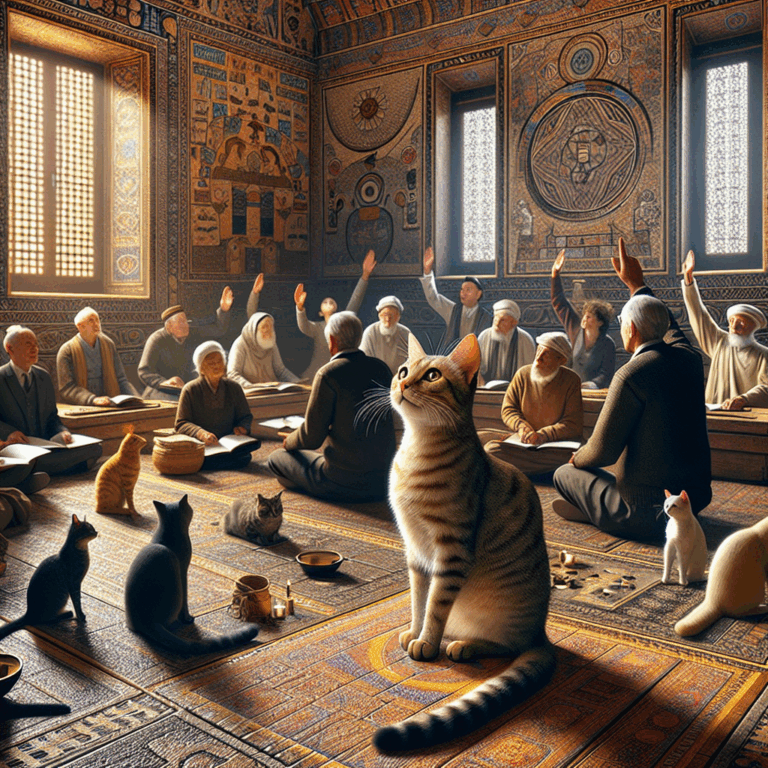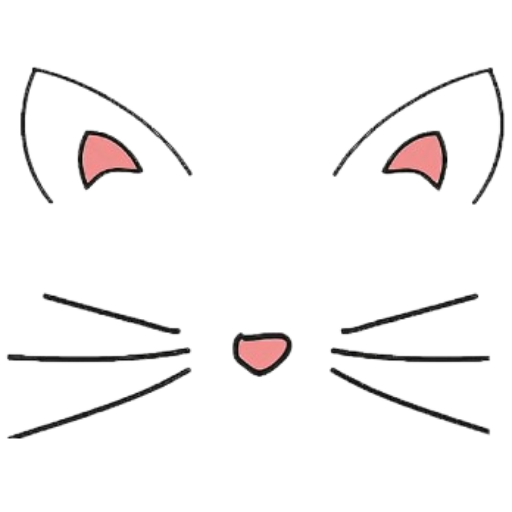The Feline Innovators of Communication: Cats and Their Subtle Influence on Linguistic Development
- 4 Comments
In a world where the art of communication is paramount, cats have carved a unique niche in influencing human linguistic development. Often overshadowed by their canine counterparts in studies of communication, cats are now emerging as significant contributors to the evolution of language and non-verbal cues among humans. Recent studies have delved into how the presence of cats in domestic settings can enhance human understanding of complex communication forms, both verbal and non-verbal.
Historically, cats have been revered across various cultures for their mysterious and often aloof demeanor. This mystique has prompted humans to develop a more nuanced approach to interpreting feline behavior, which in turn has refined human communication skills. Unlike dogs, whose communication is often direct and expressive, cats communicate through a subtle blend of sounds, body language, and behavioral cues. This has necessitated a keen observational skill among cat owners, which researchers argue has enhanced their ability to perceive and interpret non-verbal signals in human interactions.
The role of cats in language development can be traced back to ancient civilizations. In Egypt, for instance, cats were considered sacred, and their actions in the household were often interpreted as omens or messages from the divine. This belief system required a sophisticated understanding of feline behavior, which likely influenced the development of complex symbolic languages. The Sumerians and Babylonians, too, had a rich tapestry of myths and stories featuring cats, which enriched their linguistic and cultural narratives.
In modern times, the influence of cats on communication is being explored through various scientific studies. Linguists have noted that the intonation patterns used by humans to communicate with cats often mirror those used in child-directed speech. This phenomenon, known as “cat-directed speech,” involves exaggerated pitch and rhythm, closely resembling the way adults speak to infants. This form of communication is believed to foster not only a deeper bond between humans and cats but also enhances human linguistic skills by practicing varied vocal modulations.
Moreover, the rise of social media has ushered in an era where cats are at the forefront of digital communication. The proliferation of cat memes, videos, and gifs has led to the creation of a global language that transcends cultural and linguistic barriers. This digital feline frontier has introduced a new lexicon of expressions and idioms that permeates everyday conversations, further underscoring the impact of cats on modern communication.
Cats have also influenced the development of empathy and emotional intelligence in humans. The ability to interpret a cat’s subtle cues—such as a flick of the tail or a slow blink—requires a heightened sense of empathy and understanding. These skills are transferable to human interactions, where discerning unspoken emotions and intentions can significantly enhance communication effectiveness.
In educational settings, therapy animals, particularly cats, are being integrated into programs aimed at improving communication skills among children with autism spectrum disorders. The calming presence of a cat can encourage these children to express themselves more confidently and develop their verbal and non-verbal communication abilities in a supportive environment.
The influence of cats on communication is an evolving field of study, revealing that these enigmatic creatures have more to teach us than meets the eye. As research continues to unfold the complexities of feline-human interactions, it becomes increasingly clear that cats are not merely passive companions. Instead, they are active participants in the intricate dance of communication, subtly shaping the way we express and interpret the world around us.

In a world where the art of communication is paramount, cats have carved a unique niche in influencing human linguistic development. Often overshadowed by their canine counterparts in studies of communication, cats are now emerging as significant contributors to the evolution of language and non-verbal cues among humans. Recent studies have delved into how the presence of cats in domestic settings can enhance human understanding of complex communication forms, both verbal and non-verbal.
Historically, cats have been revered across various cultures for their mysterious and often aloof demeanor. This mystique has prompted humans to develop a more nuanced approach to interpreting feline behavior, which in turn has refined human communication skills. Unlike dogs, whose communication is often direct and expressive, cats communicate through a subtle blend of sounds, body language, and behavioral cues. This has necessitated a keen observational skill among cat owners, which researchers argue has enhanced their ability to perceive and interpret non-verbal signals in human interactions.
The role of cats in language development can be traced back to ancient civilizations. In Egypt, for instance, cats were considered sacred, and their actions in the household were often interpreted as omens or messages from the divine. This belief system required a sophisticated understanding of feline behavior, which likely influenced the development of complex symbolic languages. The Sumerians and Babylonians, too, had a rich tapestry of myths and stories featuring cats, which enriched their linguistic and cultural narratives.
In modern times, the influence of cats on communication is being explored through various scientific studies. Linguists have noted that the intonation patterns used by humans to communicate with cats often mirror those used in child-directed speech. This phenomenon, known as “cat-directed speech,” involves exaggerated pitch and rhythm, closely resembling the way adults speak to infants. This form of communication is believed to foster not only a deeper bond between humans and cats but also enhances human linguistic skills by practicing varied vocal modulations.
Moreover, the rise of social media has ushered in an era where cats are at the forefront of digital communication. The proliferation of cat memes, videos, and gifs has led to the creation of a global language that transcends cultural and linguistic barriers. This digital feline frontier has introduced a new lexicon of expressions and idioms that permeates everyday conversations, further underscoring the impact of cats on modern communication.
Cats have also influenced the development of empathy and emotional intelligence in humans. The ability to interpret a cat’s subtle cues—such as a flick of the tail or a slow blink—requires a heightened sense of empathy and understanding. These skills are transferable to human interactions, where discerning unspoken emotions and intentions can significantly enhance communication effectiveness.
In educational settings, therapy animals, particularly cats, are being integrated into programs aimed at improving communication skills among children with autism spectrum disorders. The calming presence of a cat can encourage these children to express themselves more confidently and develop their verbal and non-verbal communication abilities in a supportive environment.
The influence of cats on communication is an evolving field of study, revealing that these enigmatic creatures have more to teach us than meets the eye. As research continues to unfold the complexities of feline-human interactions, it becomes increasingly clear that cats are not merely passive companions. Instead, they are active participants in the intricate dance of communication, subtly shaping the way we express and interpret the world around us.



4 thoughts on “The Feline Innovators of Communication: Cats and Their Subtle Influence on Linguistic Development”
While the article provides intriguing insights, it may overstate the impact of cats on human linguistic progress without sufficient empirical backing.
This fascinating exploration highlights how cats contribute to enhancing human communication skills through their unique behaviors and interactions.
This insightful post highlights the fascinating role cats play in enhancing our communication skills and understanding of non-verbal cues.
This insightful exploration highlights the fascinating ways our feline companions contribute to enriching human communication skills.